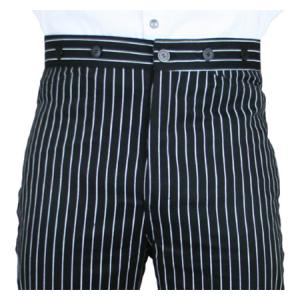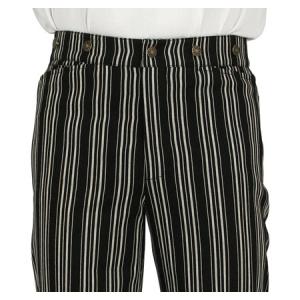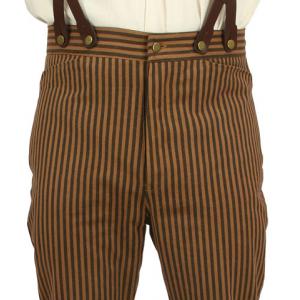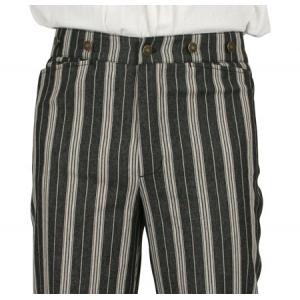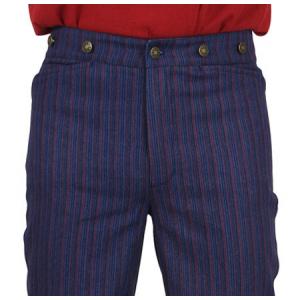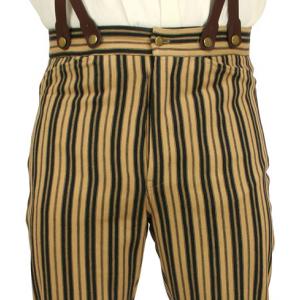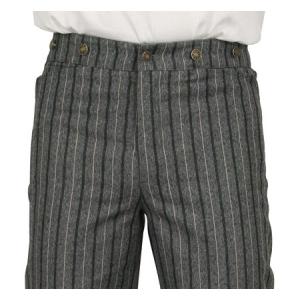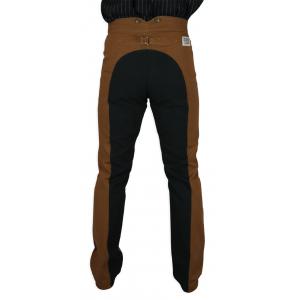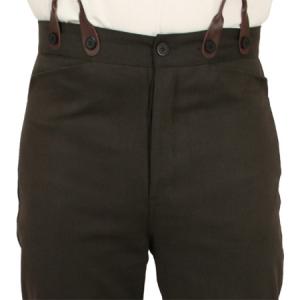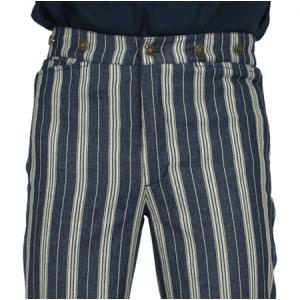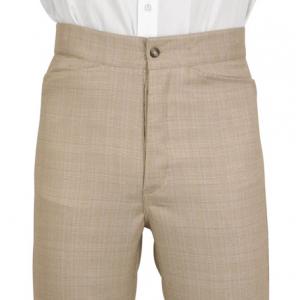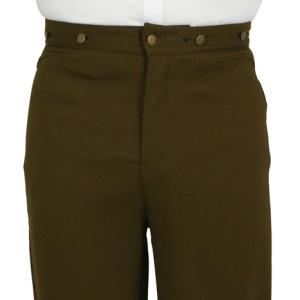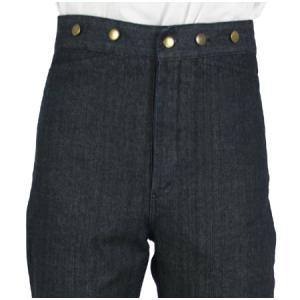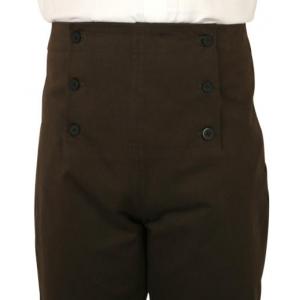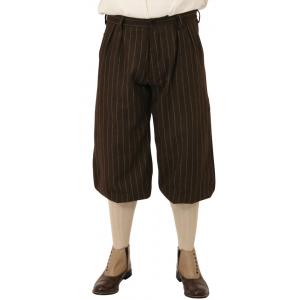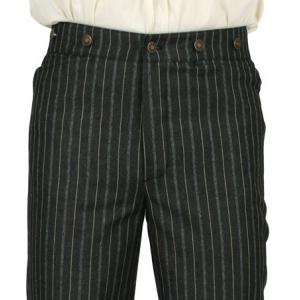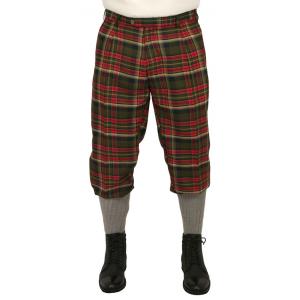Prices and Availability Subject to Change. Please call 800-997-4311 for more Information.
67 results
Q&A About Men's Vintage Trousers
How to measure myself for high waisted pants?
To measure for 19th century high waisted pants, measure your torso at the natural waist, located right at your belly button as shown in the sizing guide. This measurement is crucial since authentic Victorian/Old West trousers sit much higher than modern pants - typically at the belly button level. For the most accurate fit, measure while standing naturally and add no extra room, as these historical trousers were designed to be worn with suspenders, not belts.
Can I wear a belt with high waisted pants?
You cannot wear a belt with our authentic Victorian/Old West style trousers as they do not have belt loops. These 19th century pants were designed exclusively for suspender wear, featuring a distinctive fishtail back specifically created for suspender attachment. Belts were not commonly used with formal or work trousers during this period, as suspenders provided better support for the higher waistline.
Do I need to wear suspenders with my old fashioned high waisted pants?
You absolutely need to wear suspenders with our 19th century high waisted pants, as they feature authentic fishtail backs specifically designed for suspender buttons and no belt loops. Victorian and Old West trousers relied entirely on suspenders (also called braces) for support, with the higher waistline and button fly construction working in conjunction with suspenders to create the proper historical silhouette and function.
MORE Q&A





